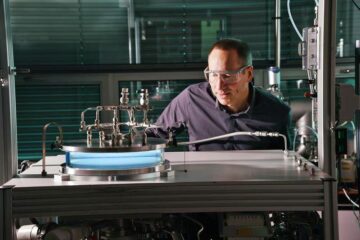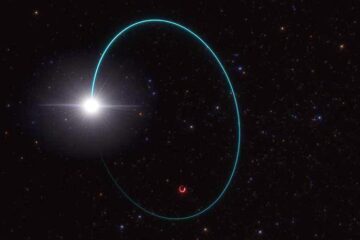Fast lane for space technology innovation

A new ESA initiative got underway this week to speed up the turnaround time from idea to product. The aim is to support the fast introduction of breakthrough innovations in the European space industry by combining the creativity and expertise of the research community, space customers and industry.
The Innovation Triangle Initiative (ITI) is based on the concept that close collaboration between the three parties involved – the inventor, the developer and the customer – is a must for the rapid and successful introduction of breakthrough technology innovations in industry. The ability to rapidly introduce novel products, technologies and services is a recognised key element in maintaining industrial competitiveness. ITI will provide early financial, networking and technical support, thus contributing to a more competitive European space industry.
„We want to provide a new tool to identify, demonstrate and validate novel ideas, technologies and concepts for space application in a fast and efficient manner,“ says Marco Guglielmi, head of Technology Strategy Section in ESA’s Technology Programmes Department, one of the founders of the initiative.
„In the space domain, to go from an idea to a product can take up to 10-15 years while outside space the innovation cycle in commercial applications typically lasts months or a few years,“ he added. „With this initiative we want to reduce significantly the turnaround time for our space technology research and development, and to utilise new and better ideas much earlier.“
With a budget of €1,500,000 in 2004, the intention is to kick off at least 10 different projects this year to explore technologies not already used in the context of space. The objective is to create a dynamic environment where innovative ideas can easily be validated, developed and used by the space industry.
Who does this initiative target? „Anyone with a good idea is a potential candidate. We welcome in particular technologies that are already exploited in the non-space environment and that have not been used yet in space applications“, says Guglielmi.
Bringing together inventors, developers and final users
During a pilot phase ESA verified the advantage of bringing together the different parties with four projects. Participating companies focussed on what was important for manufacturing and final usage, while innovators and university researchers supplied and elaborated novel ideas and concepts.
Marco Freire, ESA’s ITI manager, explains, „We saw that cross-fertilization between industry and universities working in diverse application fields can be very effective in identifying and introducing innovative solutions for space.“
Three types of activity have been defined, ’proof of concept’, ’demonstration of feasibility and use’ and ’internal process review’. The closer the involvement between the three parties, the greater the chance of a project being funded.
Proof of concept aims at validating an innovative idea that could be used in the space industry. The concept can be completely new or not yet applied to space. Typically this will involve an innovator, either from industry or a research institute or university, and an industrial partner. For this type of activity the most important evaluation element is the degree of novelty. The budget available is up to €50,000, and timescale up to nine months.
Demonstration of feasibility and use of a new idea should include the development of a component, a breadboard or a prototype to be tested and validated in a laboratory. The idea behind the concept must already have been proven and at least one space customer should have expressed interest in using this innovation. The main actor will be a research and development organisation or a small industry, maybe a Small and Medium size Enterprise (SME), with demonstrable relevant research expertise. The budget available for this is up to €150,000 with the activity lasting up to 12 months.
Internal process review covers the critical review of an existing space product, process or service to evaluate how it can be improved by using existing know-how or technology from another industrial sector. It is important to specify the potential benefit to be obtained by this new concept. The budget available is up to €100,000 and the activity is expected to last up to six months.
Fast web-based application procedure
A dedicated website allows the easy preparation and submission of proposals. Through the site potential participants can contact ESA experts for technical support or advice on preparing the proposal. A database of European industries and universities that have collaborated with ESA is available to help identify potential partners.
ITI is based upon a continuous call for ideas with a standing ESA Technical Evaluation Board to ensure that fast funding decisions are taken. „Once a proposal is submitted, the board members will immediately start the evaluation and we will inform the submitter shortly afterwards whether the proposal has been selected or rejected,“ says Freire. „A standard contract has been drafted and very limited negotiation is planned to speed up the process. Project kickoff is organised via teleconference.“
Stephane Lascar, Head of the Technology Strategy and Harmonisation Division of ESA’s Technology Programmes Department, concludes „Our objective is to kick off accepted proposals within an average of two months after proposal submission, and to see results within 6 to 12 months from kickoff.“ He stressed, „ITI will open a fast lane for space technology innovation.“
Media Contact
Weitere Informationen:
http://www.esa.int/esaCP/SEMBE02PGQD_Benefits_0.htmlAlle Nachrichten aus der Kategorie: Bildung Wissenschaft
Neueste Beiträge

Merkmale des Untergrunds unter dem Thwaites-Gletscher enthüllt
Ein Forschungsteam hat felsige Berge und glattes Terrain unter dem Thwaites-Gletscher in der Westantarktis entdeckt – dem breiteste Gletscher der Erde, der halb so groß wie Deutschland und über 1000…

Wasserabweisende Fasern ohne PFAS
Endlich umweltfreundlich… Regenjacken, Badehosen oder Polsterstoffe: Textilien mit wasserabweisenden Eigenschaften benötigen eine chemische Imprägnierung. Fluor-haltige PFAS-Chemikalien sind zwar wirkungsvoll, schaden aber der Gesundheit und reichern sich in der Umwelt an….

Das massereichste stellare schwarze Loch unserer Galaxie entdeckt
Astronominnen und Astronomen haben das massereichste stellare schwarze Loch identifiziert, das bisher in der Milchstraßengalaxie entdeckt wurde. Entdeckt wurde das schwarze Loch in den Daten der Gaia-Mission der Europäischen Weltraumorganisation,…





















